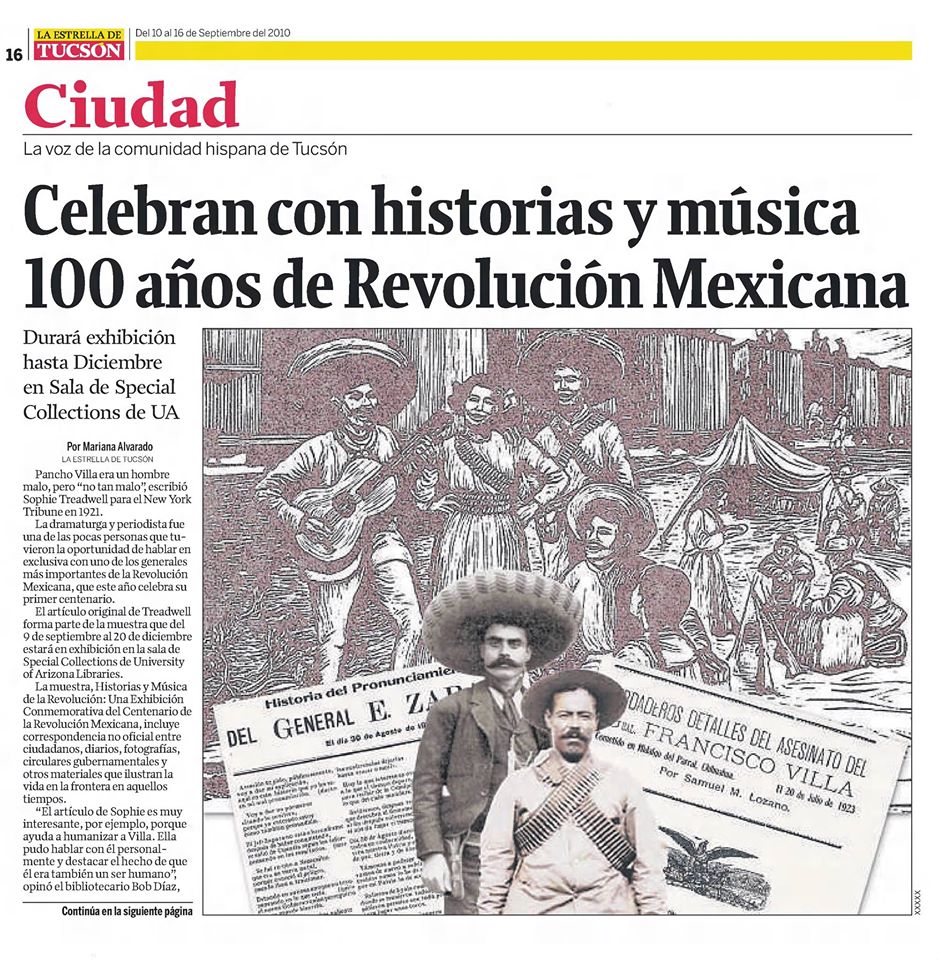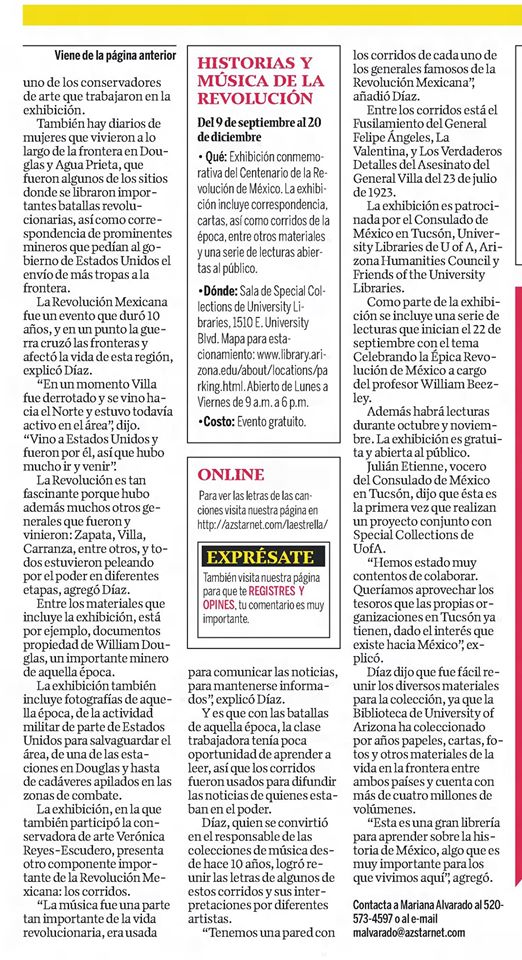Introduction:
The Mexican Revolution had a profound impact on the people of Mexico. In my own family, for example, my grandfather Antonio Diaz Palacios, a Spaniard who had migrated to Mexico from Asturias at the turn of the century, was forced to flee Mexico when revolutionary forces overtook Zacatecas in 1914. He and his wife Zeferina Torres, a native of Zacatecas, and their infant son, Raul, made their way north to Arizona and settled first in Ray, Arizona, and then moved up to the Verde Valley region of the state, where they resided for many years. Another relative, Raul Rascon, my mom’s tio and mayor of San Miguel Horcasitas, Sonora was hanged shortly after the revolution, during the Cristero rebellion, or so I’ve been told.
I’ve always been fascinated by the stories my father told me about my grandfather Antonio and what happened to him in Mexico, and as I grew older, I became very interested in the history of Mexico, and quite fond of Mexican folk music, particularly the corridos of the Mexican Revolution. In time, my interest in the genre led me to acquire a sizeable collection of books and recordings, and I when I became the librarian for music, dance and theater in 2000, I used my budding expertise to enhance the collections in the Fine Arts Library, by purchasing for the collection sound recordings, films, books and scores that featured the corrido and other forms of Mexican music. I also made sure to showcase this music on my radio show on KXCI on a regular basis.
“Stories and Music of the Revolution” was the first project where I worked with Special Collections staff to produce an exhibit and corresponding programming. I had not joined the department yet, as I was still a member of the Research Support Services team. I was invited to co-curate this exhibit with Veronica Reyes-Escudero and was responsible for coordinating two of the 5 programs held in conjunction with the exhibit. I was offered a transfer to Special Collections the following year, and accepted it. The success of this exhibit and these events, in my opinion, helped me get the new gig as coordinator of exhibits and events in Special Collections, but who knows for sure? After 12 years at the Fine Arts Library, it was a welcomed change.
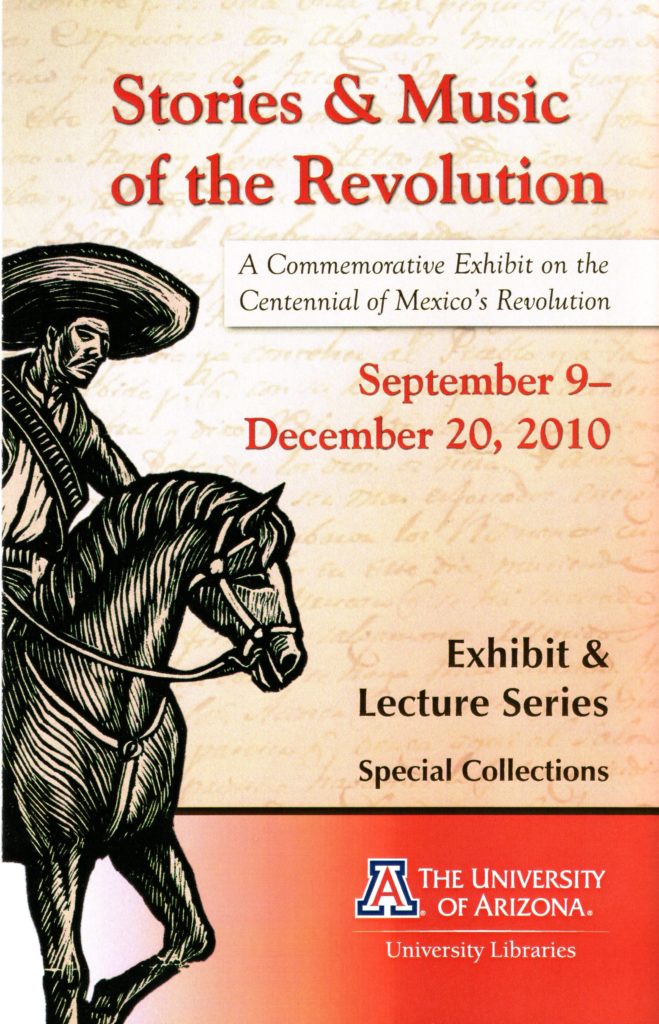
The above program was designed by Marty Taylor, the Library’s graphic artist.
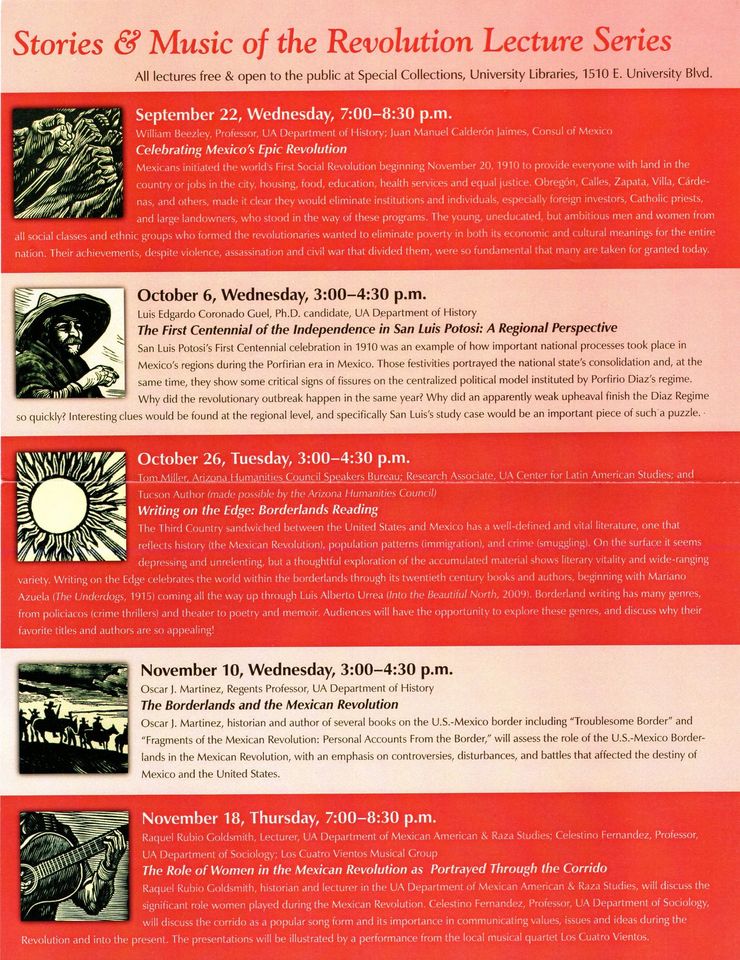
Photos of the exhibit:
Below is a sampling of photos taken of the exhibit. My sections of the exhibit were focused on the Mexican corrido.
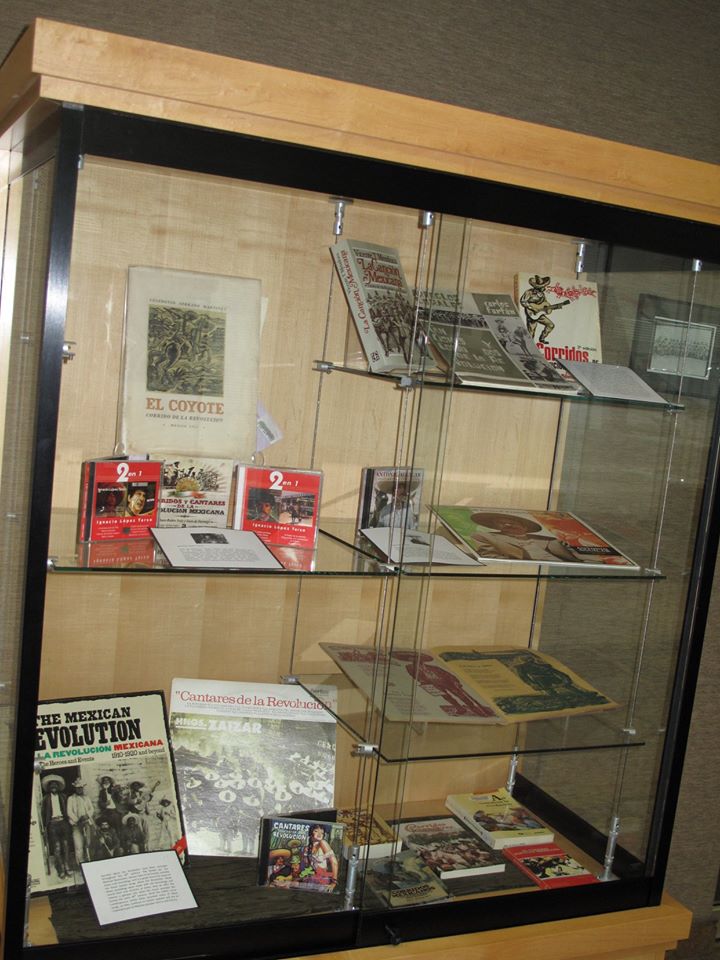
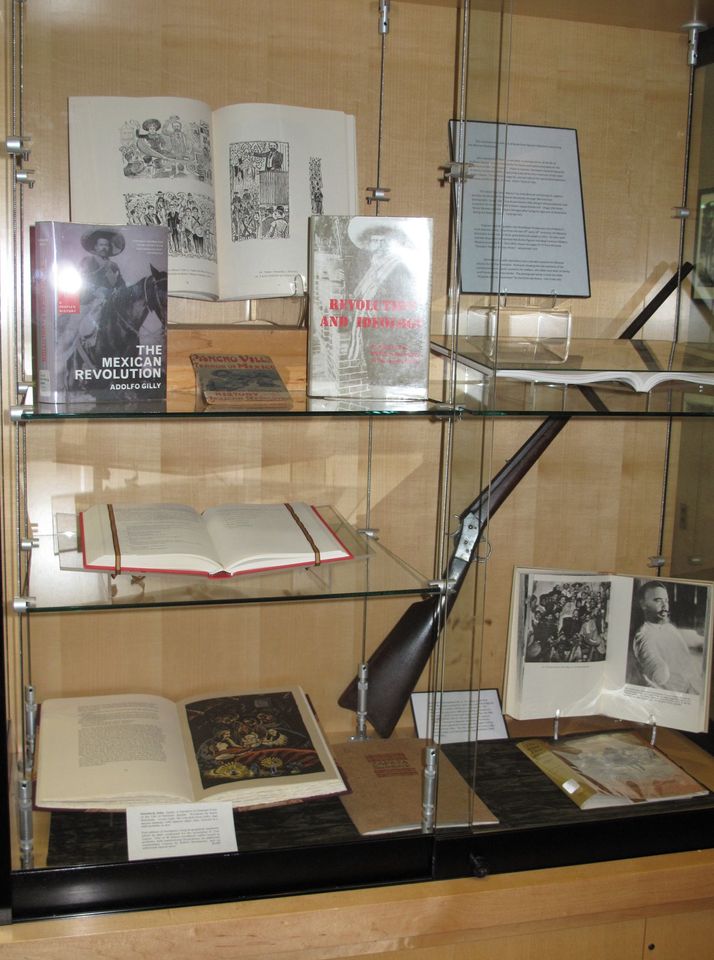
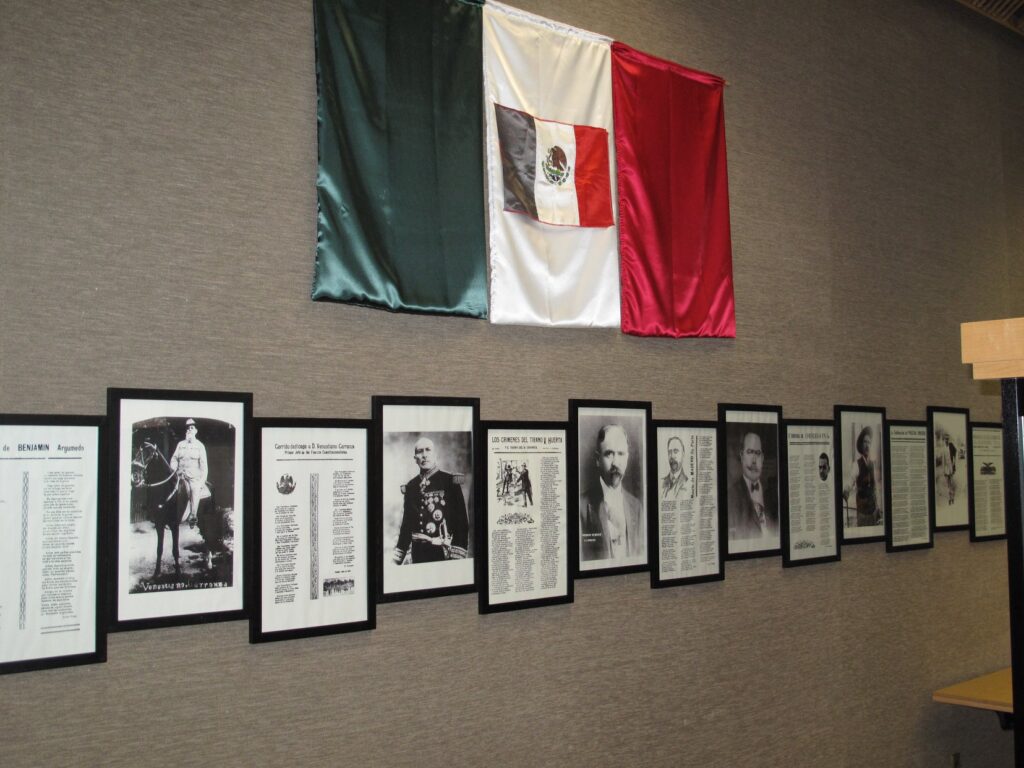
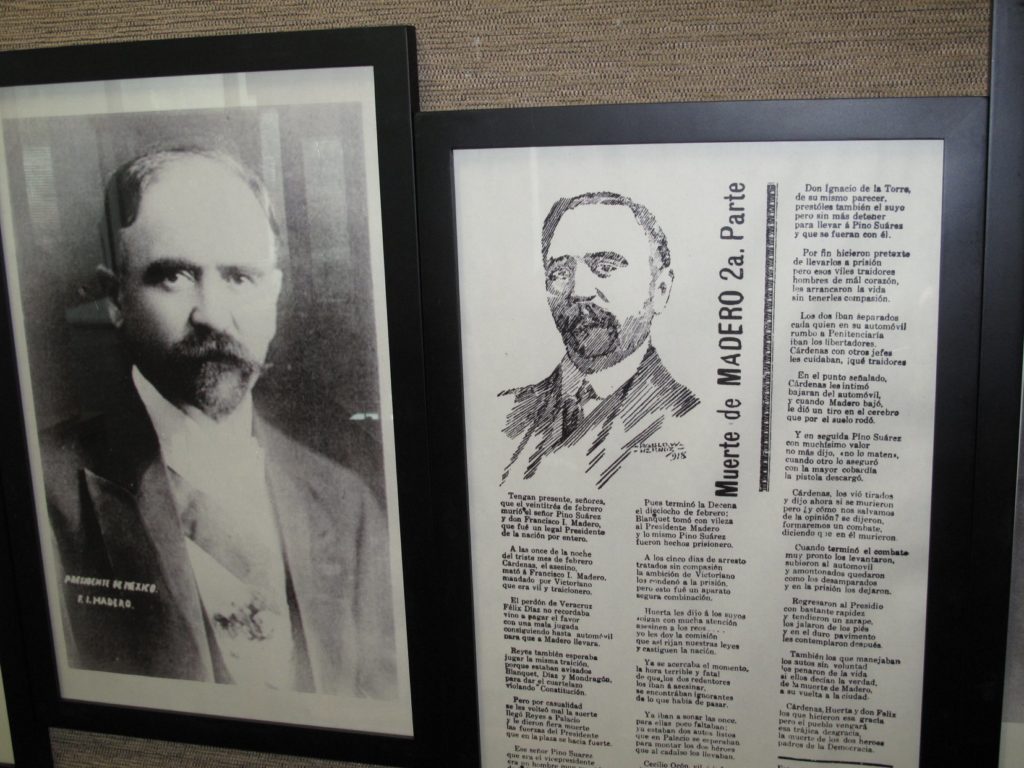
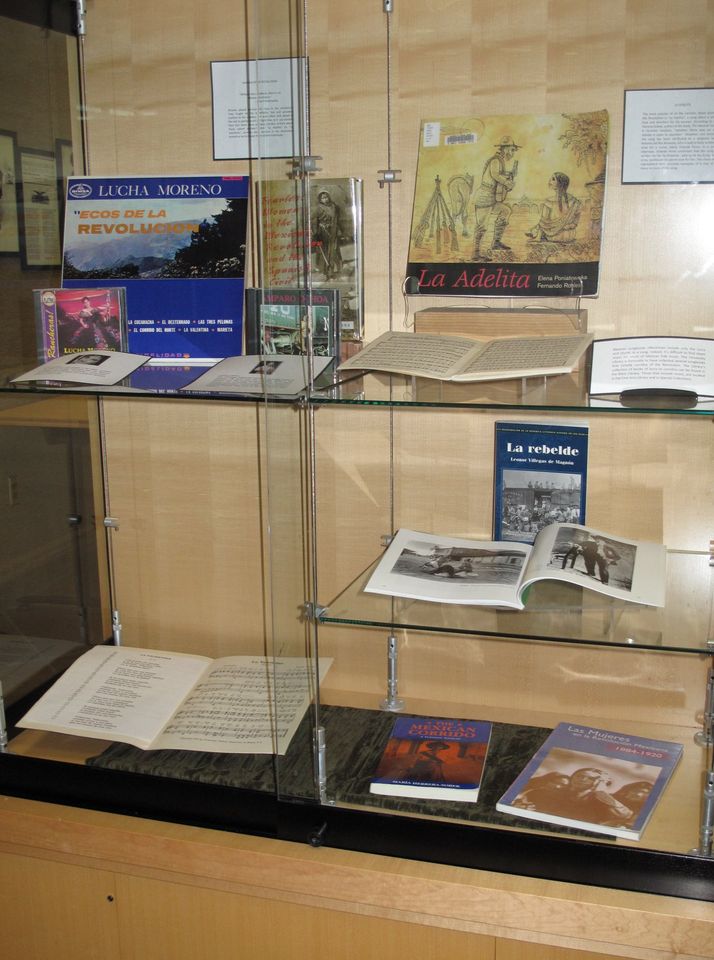

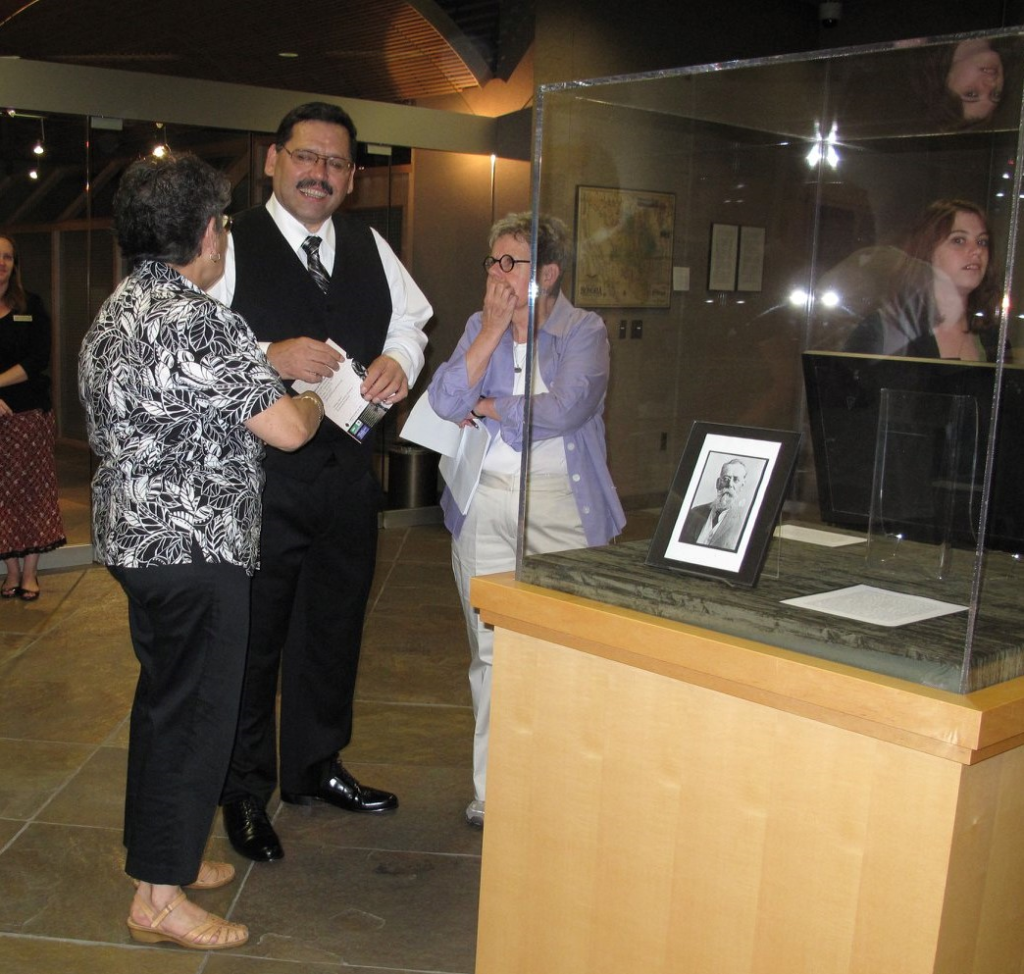
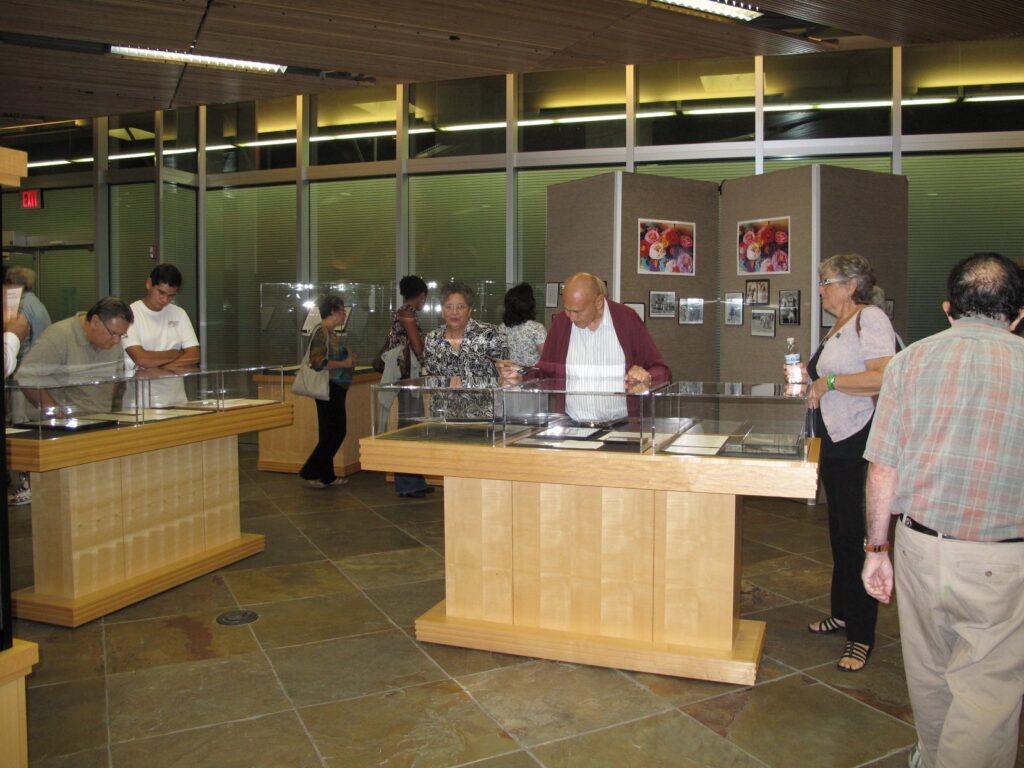
Press coverage:
UA NEWS STORY
Special Collections Brings Mexican Revolution to Life
To commemorate the centennial of the Mexican Revolution, the Mexican Consulate in Tucson has collaborated with the UA to create an exhibit on the border experience during the revolution.
By Rebecca Ruiz-McGill, University Communications
Aug. 31, 2010
The Mexican Revolution of 1910 brought on a decade of unrest for people living on or near the border.
Songs, memoirs, journals and newspapers of the time talk of battles fought on both sides of the border, and families shared stories on how troops with various affiliations would seek food, refuge and water from ranchers, who in their best interest shared what they could with impartiality to sides.
This year, 2010, marks both Mexico’s bicentennial of independence from Spain in 1810 and the centennial of its revolution in 1910. To commemorate, the Mexican Consulate in Tucson has collaborated with the University of Arizona to create an exhibit on the border experience during the revolution.
A partnership between fine arts librarian Bob Diaz and Special Collections librarian Veronica Reyes brings the revolution to life. The exhibit features unofficial correspondence among citizens, reminiscences written years after the incidents, photographs, broadsides, sound recordings, government circulars and wood-block engravings that speak to the turbulent years â from 1910-1920 â of the revolution.
Stories & Music of the Revolution: A Commemorative Exhibit on the Centennial of Mexico’s Revolutionwill beon display from Sept. 9 to Dec. 20 in the gallery at Special Collections, 1510 E. University Blvd.
The exhibit will also host monthly lectures featuring UA experts of the era. All lectures will take place in Special Collections and feature:
- The social context of Mexico’s Epic Revolution with William Beezley, a UA professor in the department of history. Sept. 22 from 7-8:30 p.m.
- A regional overview of the First Centennial of Independence by Luis Edgardo Coronado Guel, a doctoral candidate in the UA history department. Oct. 6 from 3-4:30 p.m.
- An exploration of the literature of the era titled Writing on the Edge by Latin American Studies research associate Tom Miller. Oct. 26 from 3-4:30 p.m.
- An overview of personal accounts of the Borderland Battles that defined relationships between the U.S. and Mexico by Regents’ Professor of History Oscar Martinez. Nov. 10 from 3-4:30 p.m.
- An overview of Mexican corridos â songs dedicated to defining the values, issues and ideas of the revolution â presented by Raquel Rubio Goldsmith, a lecturer in the UA department of Mexican American and Raza studies, and professor Celestino Fernandez, director of undergraduate studies in the UA department of sociology. Nov. 18 from 7-8:30 p.m.
Stories & Music of the Revolution draws from Special Collections’ expansive Borderlands materials to recreate the revolution as experienced from two perspectives: those fighting for agrarian, economic, and other societal reforms, and those seeking to stabilize the nation or remain in power. Â
“Special Collections is a treasure trove for all things related to the border,” said Bob Diaz, who helped curate the display. “Visually for the exhibit, we used broadsides with images that depict what was occurring politically at the time and in the battlefield. We also display original written accounts of the time, and we are thrilled to be able to exhibit the music of the era with sound recordings, prints and sheet music.”
The materials on display were selected from a variety of collections including the papers of journalist, playwright, and women’s rights advocate Sophie Treadwell; George Hunt, Arizona’s first governor; and the Arizona, Southwest and Borderlands photograph collection.
Sound recordings, corrido lyrics and sheet music drawn from the University Libraries’ fine arts holdings and personal collections complement the materials selected from Special Collections.
News Story from La Estrella De Tucson, a supplement to the Arizona Daily Star. Sept. 10-16, 2010.
